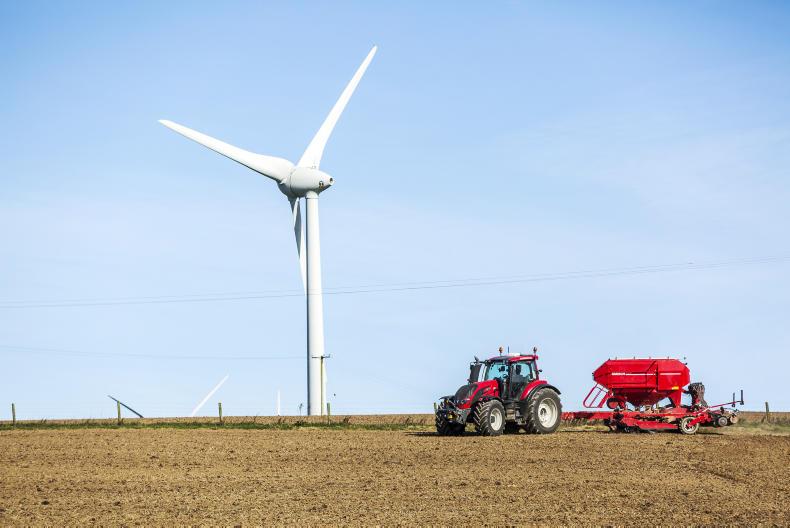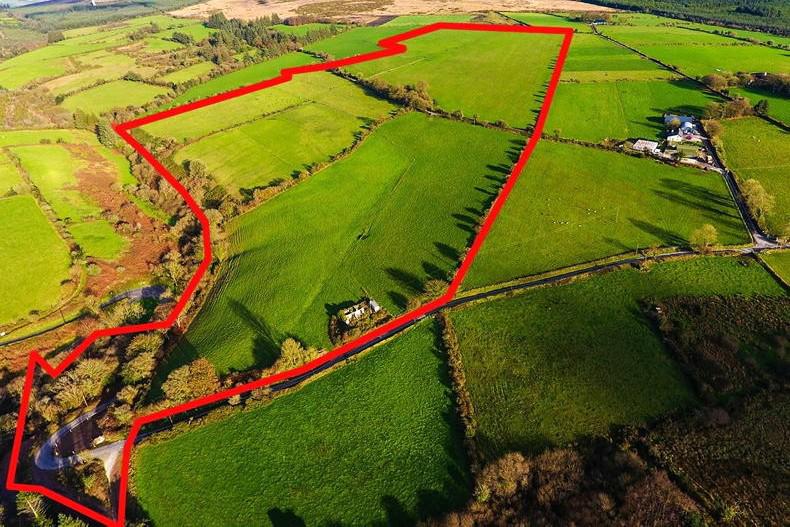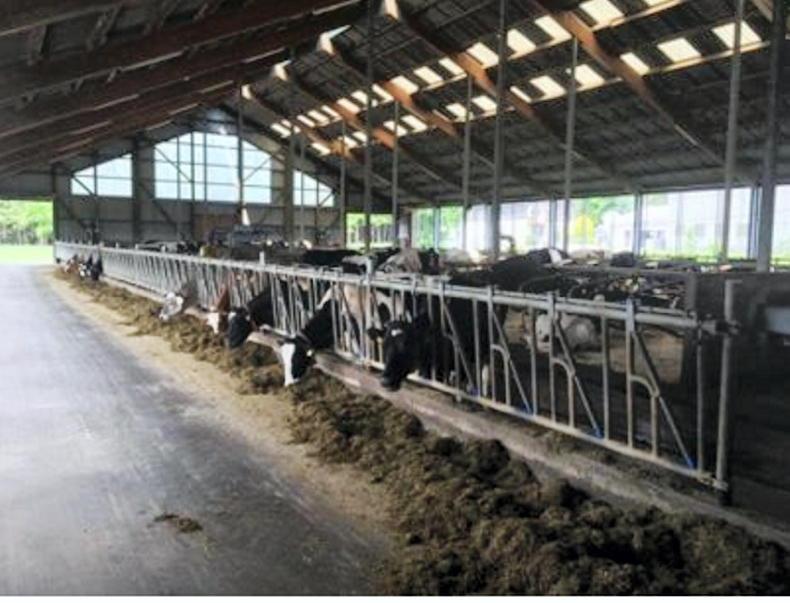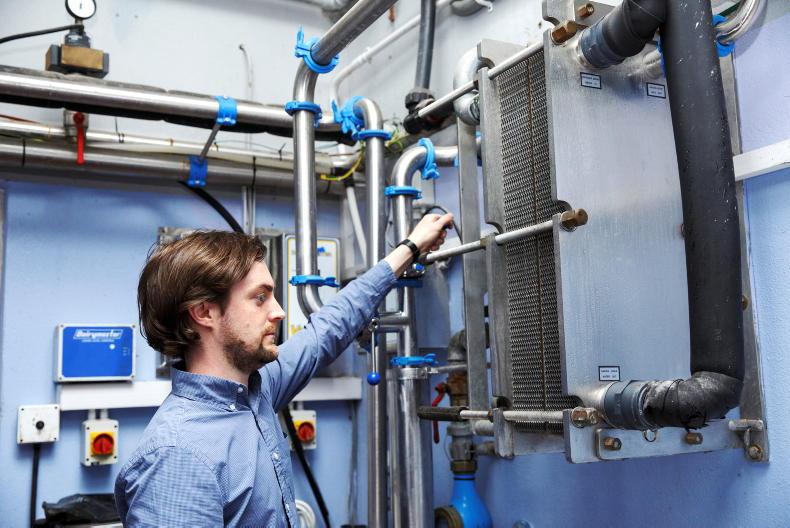Details of Ireland’s first renewable electricity auction were published late last week by the Department of Communications, Climate Action and Environment (DCCAE). The first in a series of auctions will form part of the RESS and will see generators of renewable electricity bid for financial support.
The scheme has been designed to promote investment in renewable electricity generation to contribute toward Ireland’s target of 70% renewable electricity (RES-e) by 2030, which equates to around 30 terawatt-hours (TWh).
The first auction (RESS 1) will rely on competition between renewable electricity generators to produce the lowest cost electricity for consumers. Other RESS auctions will be held at various times throughout the lifetime of the scheme.
DCCAE claims that this will allow Ireland to take advantage of falling technology costs by not auctioning all the required capacity at once and “locking in” higher costs for consumers for the entirety of the scheme.

Biogas-fuelled generators will be eligible for support but will be competing against other technologies such as wind farms
Who can apply?
As well as providing renewable electricity at competitive prices, RESS has two other key objectives. These are to deliver technology diversity and encourage community participation. As such, the scheme is open to three broad categories of renewable electricity projects. These are the community preference category, the solar preference category and the “all projects” preference category (which encompasses all other eligible technologies).
Any developer of a new project can apply for funding but each project must have a minimum capacity of 0.5MW. Technologies eligible to apply for the scheme include:
Onshore wind projects.Offshore wind projects, which use wind turbines constructed in bodies of water.High-efficiency CHP boilers fuelled exclusively by waste.High-efficiency CHP boilers fuelled by biomass.High-efficiency CHP boilers fuelled by biogas. Onshore solar thermal or solar photovoltaic technology. RESS 1 pojects using biogas or biomass must meet the requirement of at least 70% greenhouse gas emission savings in line with the Renewable Energy Directive.
Information packs will be distributed to prospective applicants by March of this year with the auction expected to take place in June. The final results of the auction will be known by July.
How does it work?
RESS 1 will be funded through the Public Service Obligation (PSO) levy charged to all final electricity consumers. Any projects within the above categories who have full planning permission and whose project is grid-contracted or is eligible to be processed to receive a valid connection offer can apply.
If eligible to qualify for the auction, the applicant will be required to specify an “offer price” for the electricity produced from the project in the auction. In each of the three categories, first preference for funding will be given to the lowest offer prices.
This means that all eligible technologies (with the exception of solar) will be competing against each other for support. Higher-cost technologies such as biogas may find it difficult to compete against lower-cost systems, such as wind. Economies of scale are also likely to dictate the bidding price.
If successful in the auction, this offer price will become the “strike price” for that project and will be used to determine the level of support required from the feed-in premium.
Successful projects that generate renewable electricity are known as the generators. They will supply electricity to the supplier who, in turn, supplies electricity to consumers.
Once a letter of offer is received, the supplier can enter into a power purchase agreement (PPA) with the generator. The strike price becomes the price paid to the generator from the supplier and remains constant over the term of RESS 1. The strike price will not be indexed or adjusted for inflation.
The supplier is then entitled to receive RESS 1 support for the duration of the scheme (2021 until 2037). RESS 1 support is structured as a two-way floating feed-in premium (FIP). The FIP is described as being two-way because when costs (ie price paid to the generator from the supplier) exceed market revenues, a “support payment” will be due to the supplier, and when market revenues exceed costs a “difference payment” will be due from the supplier.
The transmission system operator (EirGrid) will be responsible for managing the net difference between the support and difference payments over the relevant PSO levy year.
Community aspects of RESS 1
Community participation in RESS 1 is highly encouraged and two specific measures have been incorporated into the scheme to facilitate this.
Community-led projects: this is a separate preference category with funding ring-fenced for these community projects. It aims to encourage communities to develop or be involved with renewable projects in their area. The terms state that, at all times, community projects must be at least 51% owned by a renewable energy community either by way of direct ownership of the RESS 1 project’s assets or direct ownership of the shares in the generator. At least 51% of all profits, dividends and surpluses derived from the RESS 1 project are returned to the community.
Community benefit fund: all RESS 1 projects are required to establish a community benefit fund prior to operation. The contribution to the fund will be €2/MWh of loss-adjusted metered quantity (metered electricity quantity adjusted to reflect transmission losses and distribution losses). The generator must take steps to raise awareness and promote an annual application process to avail of financial support from the community benefit fund. A minimum of 40% of the fund will be paid to not-for-profit community groups and up to 10% can be spent on administration, while the balance will be spent on other initiatives from successful fund applicants.
As part of the fund, in the case of onshore wind projects, the generator will pay minimum of €1,000 to each household located within a distance of a 1km radius from the project.
Details of Ireland’s first renewable electricity auction were published late last week by the Department of Communications, Climate Action and Environment (DCCAE). The first in a series of auctions will form part of the RESS and will see generators of renewable electricity bid for financial support.
The scheme has been designed to promote investment in renewable electricity generation to contribute toward Ireland’s target of 70% renewable electricity (RES-e) by 2030, which equates to around 30 terawatt-hours (TWh).
The first auction (RESS 1) will rely on competition between renewable electricity generators to produce the lowest cost electricity for consumers. Other RESS auctions will be held at various times throughout the lifetime of the scheme.
DCCAE claims that this will allow Ireland to take advantage of falling technology costs by not auctioning all the required capacity at once and “locking in” higher costs for consumers for the entirety of the scheme.

Biogas-fuelled generators will be eligible for support but will be competing against other technologies such as wind farms
Who can apply?
As well as providing renewable electricity at competitive prices, RESS has two other key objectives. These are to deliver technology diversity and encourage community participation. As such, the scheme is open to three broad categories of renewable electricity projects. These are the community preference category, the solar preference category and the “all projects” preference category (which encompasses all other eligible technologies).
Any developer of a new project can apply for funding but each project must have a minimum capacity of 0.5MW. Technologies eligible to apply for the scheme include:
Onshore wind projects.Offshore wind projects, which use wind turbines constructed in bodies of water.High-efficiency CHP boilers fuelled exclusively by waste.High-efficiency CHP boilers fuelled by biomass.High-efficiency CHP boilers fuelled by biogas. Onshore solar thermal or solar photovoltaic technology. RESS 1 pojects using biogas or biomass must meet the requirement of at least 70% greenhouse gas emission savings in line with the Renewable Energy Directive.
Information packs will be distributed to prospective applicants by March of this year with the auction expected to take place in June. The final results of the auction will be known by July.
How does it work?
RESS 1 will be funded through the Public Service Obligation (PSO) levy charged to all final electricity consumers. Any projects within the above categories who have full planning permission and whose project is grid-contracted or is eligible to be processed to receive a valid connection offer can apply.
If eligible to qualify for the auction, the applicant will be required to specify an “offer price” for the electricity produced from the project in the auction. In each of the three categories, first preference for funding will be given to the lowest offer prices.
This means that all eligible technologies (with the exception of solar) will be competing against each other for support. Higher-cost technologies such as biogas may find it difficult to compete against lower-cost systems, such as wind. Economies of scale are also likely to dictate the bidding price.
If successful in the auction, this offer price will become the “strike price” for that project and will be used to determine the level of support required from the feed-in premium.
Successful projects that generate renewable electricity are known as the generators. They will supply electricity to the supplier who, in turn, supplies electricity to consumers.
Once a letter of offer is received, the supplier can enter into a power purchase agreement (PPA) with the generator. The strike price becomes the price paid to the generator from the supplier and remains constant over the term of RESS 1. The strike price will not be indexed or adjusted for inflation.
The supplier is then entitled to receive RESS 1 support for the duration of the scheme (2021 until 2037). RESS 1 support is structured as a two-way floating feed-in premium (FIP). The FIP is described as being two-way because when costs (ie price paid to the generator from the supplier) exceed market revenues, a “support payment” will be due to the supplier, and when market revenues exceed costs a “difference payment” will be due from the supplier.
The transmission system operator (EirGrid) will be responsible for managing the net difference between the support and difference payments over the relevant PSO levy year.
Community aspects of RESS 1
Community participation in RESS 1 is highly encouraged and two specific measures have been incorporated into the scheme to facilitate this.
Community-led projects: this is a separate preference category with funding ring-fenced for these community projects. It aims to encourage communities to develop or be involved with renewable projects in their area. The terms state that, at all times, community projects must be at least 51% owned by a renewable energy community either by way of direct ownership of the RESS 1 project’s assets or direct ownership of the shares in the generator. At least 51% of all profits, dividends and surpluses derived from the RESS 1 project are returned to the community.
Community benefit fund: all RESS 1 projects are required to establish a community benefit fund prior to operation. The contribution to the fund will be €2/MWh of loss-adjusted metered quantity (metered electricity quantity adjusted to reflect transmission losses and distribution losses). The generator must take steps to raise awareness and promote an annual application process to avail of financial support from the community benefit fund. A minimum of 40% of the fund will be paid to not-for-profit community groups and up to 10% can be spent on administration, while the balance will be spent on other initiatives from successful fund applicants.
As part of the fund, in the case of onshore wind projects, the generator will pay minimum of €1,000 to each household located within a distance of a 1km radius from the project.










SHARING OPTIONS